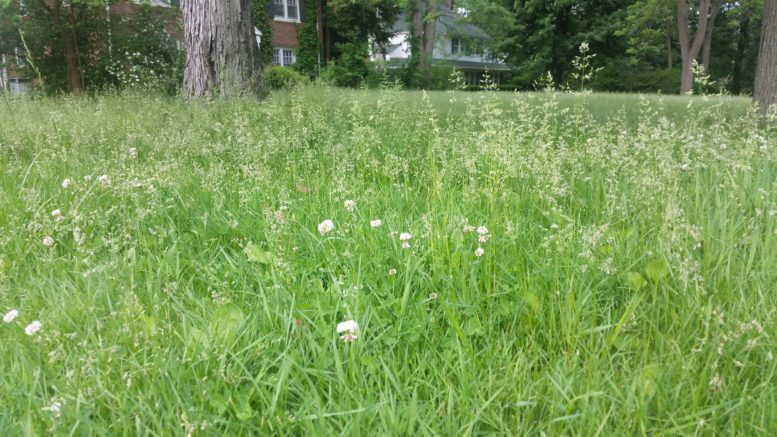By JAN LARSON McLAUGHLIN
BG Independent News
The grass may be greener on the other side of the fence – but it may also be taller, which could get your neighbor a notice about grass and noxious weed violations.
This is the time of year when spring rains bring on rapid grass growth, catching some homeowners unprepared or unwilling to deal with their grass and wayward weeds.
“Spring is always the worst, with the onslaught of the rain,” said Jason Westgate, Bowling Green’s code enforcement officer.
Westgate estimated the city has issued 10 to 20 grass and weed notices each day during the month of May. It’s like a summer version of the city’s snow shoveling ordinance. If landowners don’t take care of the property themselves, then the city will – and send the owners the bill.
“During rainy spells, we try to give people time to catch up,” Westgate said. “But we had a lot of people calling to complain that neighbors haven’t mowed and the grass was getting knee-high.”
The city’s tall grass and noxious weed ordinance sets the maximum allowed grass height at 8 inches, and prohibits particularly unruly weeds like wild mustard, musk thistle, giant hogweed and poison hemlock, as suggested by the Ohio Department of Agriculture.
So like every other springtime, code enforcement has again been busy trying to remind residents of the rules.
“It depends on when the warm weather comes and the rain hits. Then it becomes a perfect storm,” said Heather Sayler, city planning director.
Several of the violations are reported by unhappy neighbors, and others are spotted by the code enforcement officer. Some involve foreclosed homes, others are rentals that are unused in the summer, and others are just neglected.
Sayler said some resident wait to mow until they get notices. “It’s time consuming,” for the city, she said. “It’s so time consuming, but it’s important,” especially for limiting mosquitoes and other critters.
When tall grass or weed outbreaks are reported, a letter is posted on the offending home and a notification is sent in the mail.
“Sometimes it upsets people when they get that letter,” Sayler said. “We try to make it a nice letter,” not very threatening. “But it also has to have a little bit of teeth,” to get some homeowners to respond.
The city gives property owners a chance clean up their act themselves.
“Once we post the property, they are given five days to remedy the situation,” Westgate said.
Oftentimes, residents on both ends of the issue get upset – either because the city is seen as overbearing, or because the yard can get even more out of control before it’s mowed, Westgate said.
Nine out of 10 property owners comply with the order. Those who don’t, have their yards mowed by a service contracted by the city.
“The problem we run into are vacant properties, or landlords who live out of town,” Westgate said. “It’s an ongoing thing. It’s a daily thing.”
The city tries to work with people who have hardships, such as a recent case with an elderly woman who moved into a nursing home.
“The neighbors were trying to keep the front yard mowed,” but the back yard quickly became overgrown.
“We try to work with people,” Westgate said. “But in some cases we have no choice but to go in and get it mowed.”
Those who don’t pay for the service have the amount put on their tax duplicate. And repeat offenders may face civil citations, “which we don’t like to resort to,” he said. “That’s going to be above and beyond the mowing cost. We don’t like to do that.”
The city also tries to work with people facing foreclosure or eviction. “We try to work with them and try not to penalize them, and come up with other solutions.”
But Westgate is aware that for every untamed yard, there is likely an unhappy neighbor.
“We try to keep the neighborhoods looking good and keep people happy,” he said.

